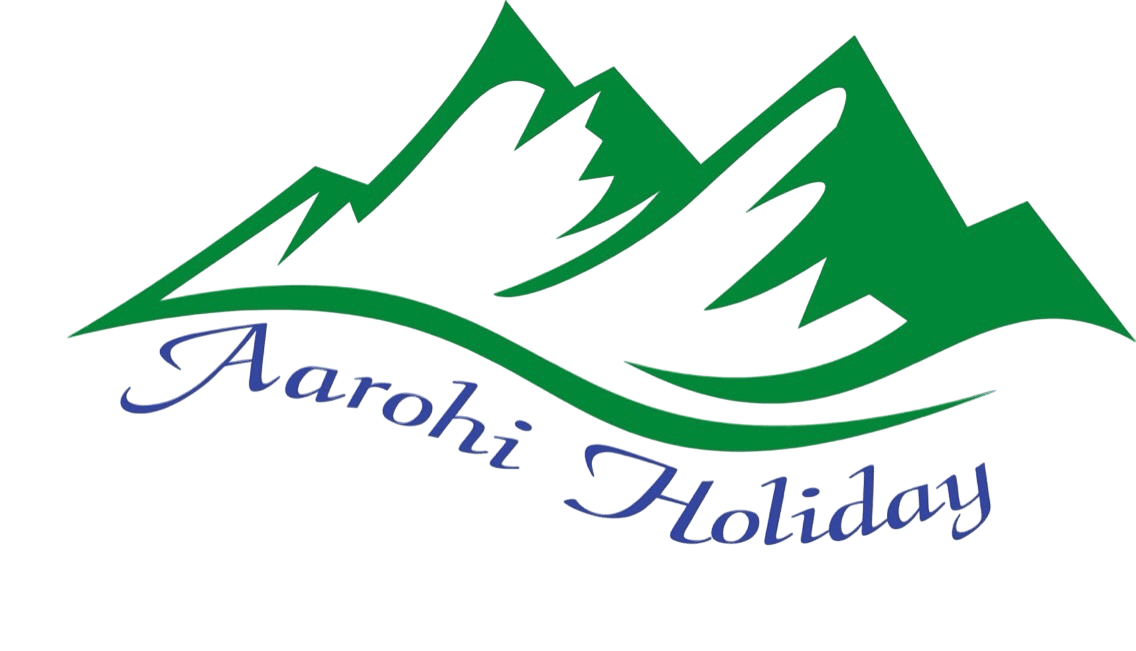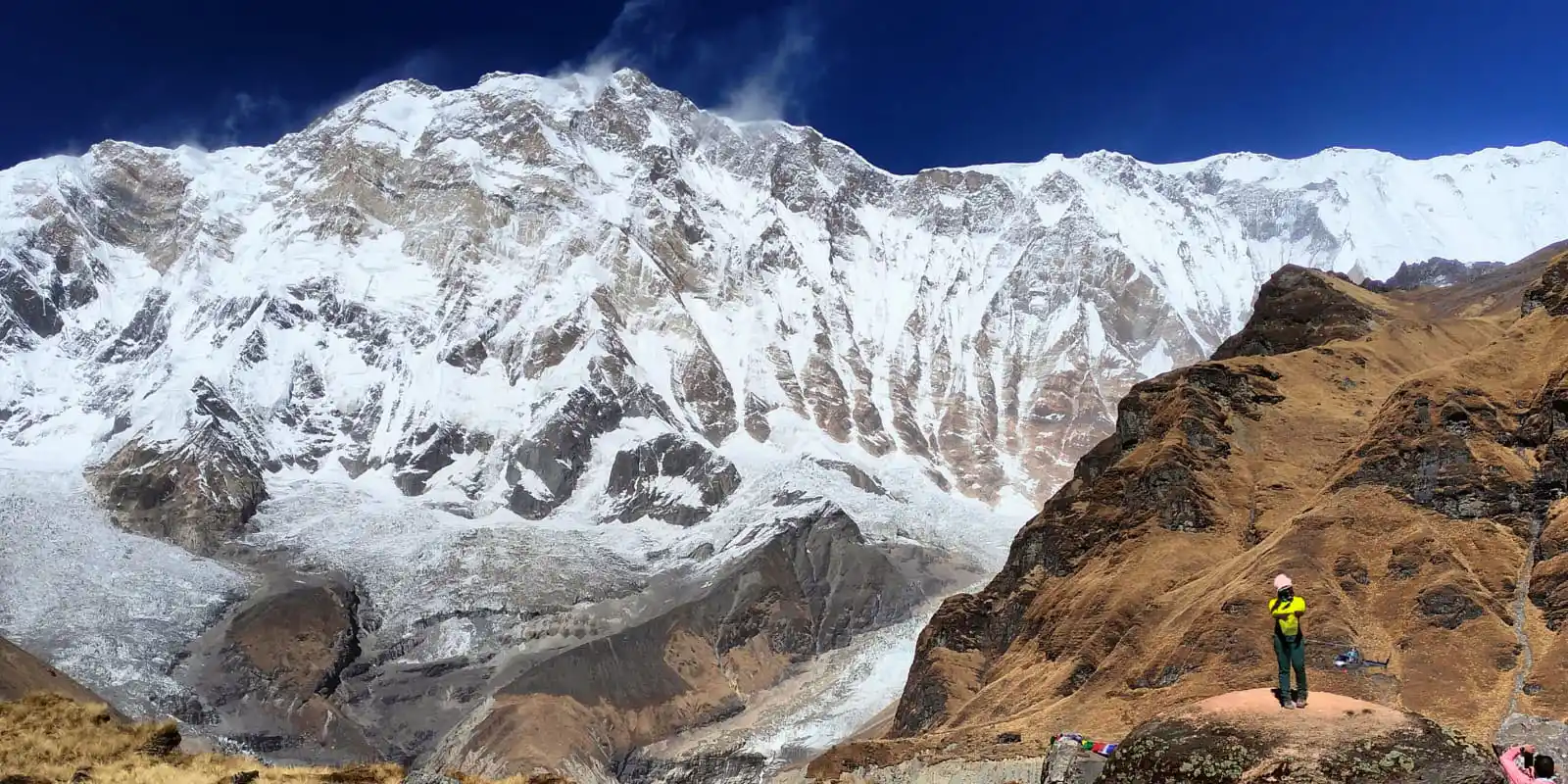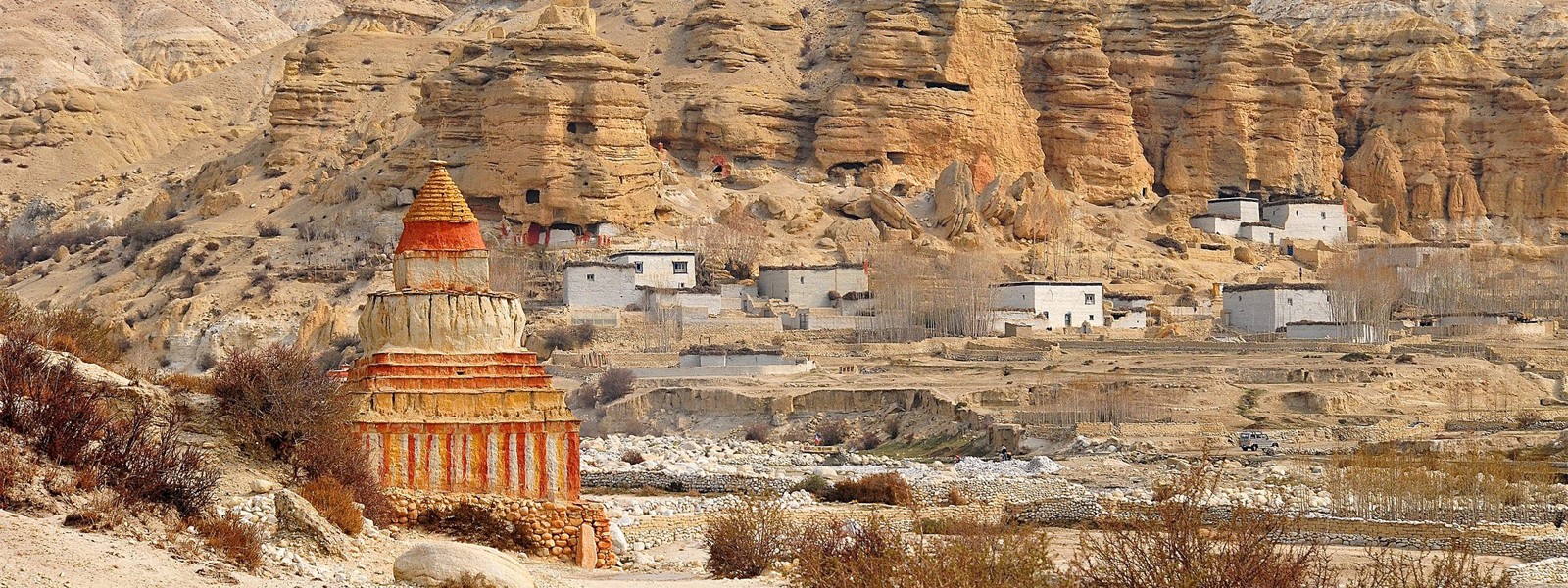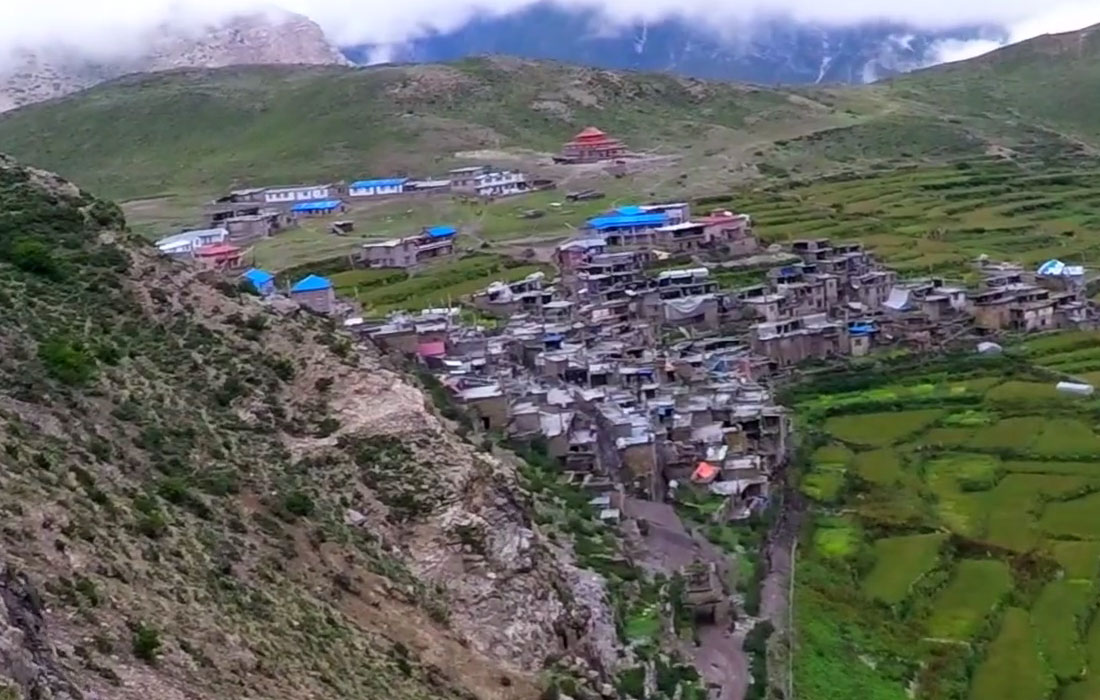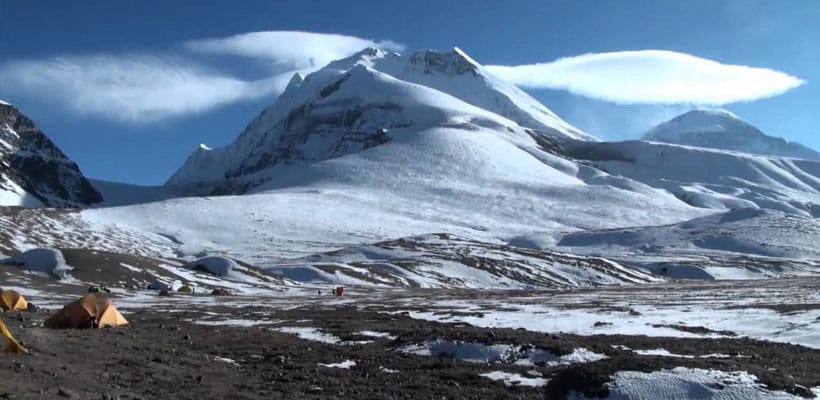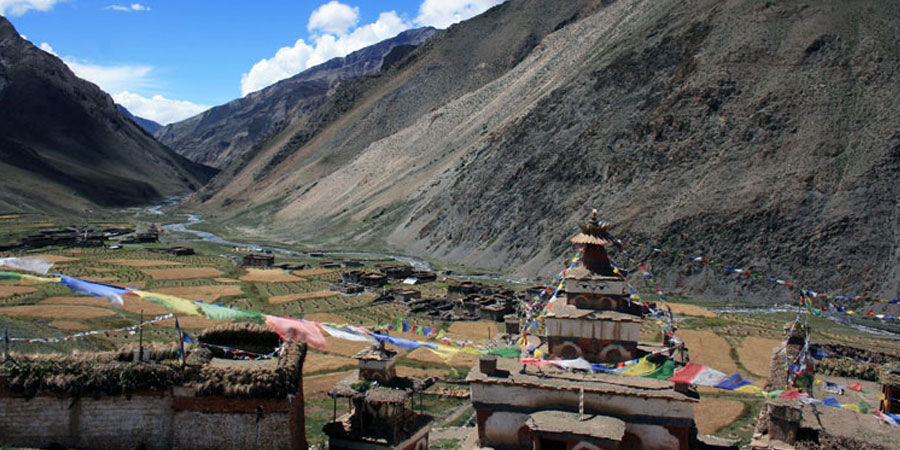Accommodation during Upper Dolpo Trekking
- In Kathmandu and Nepalgunj we provide comfortable accommodation in 3-star hotels with breakfast on a twin-sharing basis.(Private room accommodation can be organized at an extra cost)
- During the trek, we provide comfortable teahouse or tent accommodation on a twin-sharing basis. Hot showers, Wi-Fi, and device charging are available for an additional cost.
Meals and Drinking water on Upper Dolpo Trekking
During the trek, you’ll enjoy three fresh and nourishing meals daily—breakfast, lunch, and dinner—served at local teahouses where available or prepared by our trekking crew in remote camping areas. Meals often feature traditional Nepali staples like dal bhat (rice, lentils, and vegetables) along with Tibetan-inspired dishes such as momos, thukpa (noodle soup), and chapati. In camping sections, our crew cooks a variety of simple yet wholesome meals to keep you well-fueled for the challenging trails and high passes of Upper Dolpo.
Hydration is especially important in Upper Dolpo’s high-altitude, dry environment. While bottled water can be found in a few villages, most areas rely on natural water sources. Your guide will ensure all drinking water is purified using tablets or drops, allowing you to drink safely while reducing plastic waste.
Required Permits for the Upper Dolpo Trekking
For Upper Dolpo, you’ll need a Restricted Area Permit and a Shey Phoksundo National Park Permit. We handle all the paperwork and fees—just pack your bags and get ready for the journey.
- The special trekking permit costs USD 500 per person for the first 10 days, with an additional USD 5 per person for each extra day.
- The Shey Phoksundo National Park entrance fee is USD 30 per person (no time limit)
Best Time for Upper Dolpo Trekking
The best seasons for the Upper Dolpo Trek are spring (April to May) and autumn (September to October), when the weather is stable, skies are clear, and the trails reveal breathtaking views of Dolpo’s high passes, remote valleys, and Shey Phoksundo Lake. Spring offers blooming wildflowers and vibrant landscapes, while autumn brings crisp air and exceptional visibility.
Winter (November to March) is extremely cold in Upper Dolpo, with many passes blocked by snow, making it difficult for most trekkers. Thanks to Dolpo’s location in a rain-shadow area, the monsoon months (June to August) are drier than much of Nepal, so summer trekking is possible—though some routes may still be challenging. No matter when you choose, we’ll ensure your Upper Dolpo journey is safe, comfortable, and unforgettable.
Upper Dolpo Trekking Difficulties
The Upper Dolpo Trek is a challenging and remote adventure that demands daily walks of 6 to 8 hours across steep ascents, rocky trails, and several high mountain passes—some exceeding 5,000 meters, such as Kang La Pass (5,360 m) and Saldang La (5,200 m). The extreme altitude increases the risk of altitude sickness if proper acclimatization is not maintained, which is why our itinerary includes carefully planned rest days to help your body adjust.
Upper Dolpo is among Nepal’s most isolated trekking regions, with very limited teahouses and many nights spent camping in the wilderness. Trekkers should be prepared for basic facilities, unpredictable weather, and long stretches without access to modern comforts. With solid physical preparation, the right gear, and the guidance of our experienced local team, you can take on the Upper Dolpo challenge and experience one of the most untouched and culturally rich regions in the Himalayas.
Altitude Sickness and Prevention on Upper Dolpo Trekking
At Aarohi Holiday, your safety is our top priority, especially on high-altitude adventures like the Upper Dolpo Trek. Our guides are highly experienced in altitude sickness prevention, first aid, and emergency response. They monitor trekkers closely and ensure a gradual ascent, with acclimatization days built into the itinerary to help your body adjust naturally to the thin air above 5,000 meters.
Altitude sickness can cause headaches, nausea, dizziness, or unusual fatigue, and any sign of discomfort is treated with immediate care. Depending on the situation, our team may recommend extra rest, increased hydration, descent to a lower altitude, or in rare cases, emergency evacuation. Before the trek begins, you will receive a thorough safety briefing, and throughout the journey, your guide will stay in regular contact to check your condition. With proper precautions and the support of our expert local team, you can trek through Upper Dolpo’s wild beauty with confidence and peace of mind.
Travel Insurance for Upper Dolpo Trekking
Aarohi Holiday strongly advises every trekker to arrange comprehensive travel and medical insurance before embarking on the Upper Dolpo Trek. This adventure takes you deep into remote, high-altitude terrain where medical facilities are scarce and emergency access can be challenging. Your policy should cover trekking at elevations of at least 5,500 meters and include protection for personal injury, accidents, medical treatment, and emergency evacuation, particularly helicopter rescue if required.
It’s also wise to choose insurance that covers trip cancellations, delays, lost or damaged baggage, and other unexpected situations. Having the right coverage provides peace of mind, allowing you to fully enjoy the rugged landscapes and rich culture of Upper Dolpo while we take care of all the trekking arrangements.
Upper Dolpo Trekking Itinerary
The Upper Dolpo Trek is an epic journey into one of Nepal’s most remote and culturally rich corners, known for its starkly beautiful landscapes, timeless Tibetan traditions, and sacred monasteries. Your adventure begins in Kathmandu with a warm welcome and a sightseeing tour of the valley’s UNESCO World Heritage Sites, giving you a taste of Nepal’s history and culture before heading west.
From Kathmandu, you fly to Nepalgunj and then take a scenic mountain flight to Juphal, the starting point of your trek. The journey begins with a walk to Suligad Ghat, followed by gradual ascents through charming villages such as Renje, before reaching the turquoise waters of Phoksundo Lake via the traditional Ringmo village. After a rest and exploration day at Phoksundo, the trail continues through remote valleys and along wild river gorges to reach Shey Gompa, known as the Crystal Monastery.
From Shey Gompa, you will cross high passes including Saldang La and Jeng La, visiting isolated villages like Namgung, Saldang, and Yangze Gompa, and witnessing a way of life that has remained largely unchanged for centuries. Acclimatization days at key locations such as Phoksundo and Dho Tarap help ensure a safe and comfortable journey at high altitude.
The final section of the trek descends through the Tarap Valley, following the Tarap Khola to Khanigaon, then passing Tarakot before reaching Dunai. From Dunai, you return to Juphal for your flight to Nepalgunj and onward to Kathmandu. Over 23 days, this trek combines adventure, spiritual encounters, and stunning Himalayan scenery, offering a truly unforgettable experience in one of Nepal’s most hidden treasures.
Upper Dolpo Trekking Cost
The cost of the Upper Dolpo Trek depends on the season, group size, and level of services you choose. Our 23-day trek is priced at USD 4,228 per person, covering all essential services from your arrival in Kathmandu to your final departure. This all-inclusive package ensures a smooth, safe, and unforgettable experience in one of Nepal’s most remote and culturally rich regions.
This price is based on a minimum of two people. For group bookings, we offer special discounts of 5 to 10 percent, and the group leader can join the trek free of charge. With Aarohi Holiday’s transparent pricing and no hidden fees, you get excellent value for a unique and rewarding Himalayan adventure through the breathtaking Upper Dolpo region.
Important Notes for Upper Dolpo Trekking
- This itinerary includes round-trip flights between Kathmandu, Nepalgunj, and Juphal.
- Porters can carry up to 20kg, and with one porter for every two trekkers, we recommend packing no more than 10kg per person. A durable duffle bag will be provided for your gear.
- There are no ATMs on the Upper Dolpo Trekking, so carry enough cash from the city before starting your trek.
- Meals are included throughout the trek, while services like hot showers and device charging at teahouses or lodges are available for an additional fee.
- Meals and entry fees for sightseeing in Kathmandu are not included in the trek package.
- Drones require hard-to-get permits, so it’s best not to bring.
Fitness Preparation for the Trek
The Upper Dolpo Trek is a demanding high-altitude journey that requires good physical fitness and endurance. To make the most of your experience and reduce the risk of fatigue or injury, we recommend preparing your body with regular cardio exercises such as hiking, jogging, cycling, or swimming for at least 6 to 8 weeks before the trek.
Strength training for your legs, core, and back is equally important, as the trail involves long ascents, descents, and carrying a daypack. Practicing long walks with a loaded backpack will help condition your body for the trek’s challenges. Being physically prepared not only improves your stamina but also supports better acclimatization to the high elevations of Upper Dolpo’s remote mountains.
A Typical Day on the Trail
A typical day on the Upper Dolpo Trek involves 6 to 8 hours of walking through breathtaking and diverse landscapes, including high mountain passes, deep valleys, remote villages, and rugged terrain. Each day begins with a hearty breakfast before you set out on trails that gradually climb to higher elevations.
Along the way, you’ll pass through isolated settlements, offering opportunities to meet locals and experience their unique Tibetan-influenced culture and traditions. The pace is steady and manageable, with time for rest stops, photography, and taking in the incredible scenery. Evenings are spent in teahouses or campsites, where you can relax, enjoy wholesome meals, and recharge for the next day’s adventure.
Arrival Instruction
Upon your arrival at Tribhuvan International Airport, our company representatives are stationed to welcome you to the country. We request you to carefully look for your name being held by our representatives following the events upon landing. The representatives are responsible to escort you to your hotel in Kathmandu. You will see men offering you to carry luggage and take you to your destination as you exit the airport. We request you pay no attention to these people and follow the designated representatives and follow their instructions. You will also need to keep an eye on your luggage and belongings to avoid any complications.
Nepal Visa Entry Procedure
For entry into Nepal, there are visa requirements everyone (except Indian nationals) must complete before being allowed to pass through immigration. This is for air travel as well as overland transportation. Most visitors may obtain a visa to enter Nepal, however, there are exceptions.
- 15-day single entry: US $30
- 30-day single entry: US $50
- 90-day multiple entries:US $125
Please have a passport valid for at least 6 months from the time of entry, and have cash ready, preferably in US dollars, though there are other currencies Nepal Immigration accepts. If you are entering via overland, you must have US cash and 3 passport photos. For arrival by air, the kiosks at the airport take your picture for you. For the most up to date list of exceptions for visa on arrival or to obtain the most current visa information, visit the Nepal Department of Immigration website.
